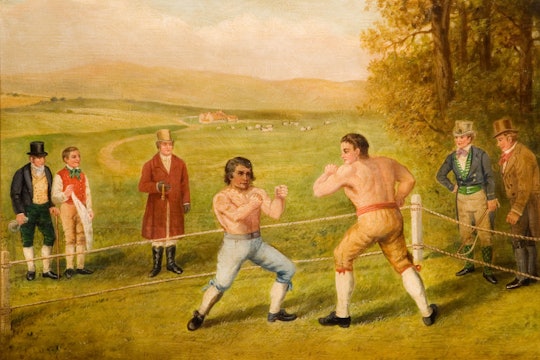
How survival of the fittest can look a lot like rock-paper-scissors
Sometimes ancestors are more "fit" than their progeny
Let's say that something called A beats something else, B. If B beats C, then we can say that A also beats C. This is called a transitive property. But this logic does not hold all the time. For example, the game rock-paper-scissors doesn't obey this transition, it is non-transitive.
The evolutionary principle of survival of the fittest implies that an organism's strong genetic traits pass to their progeny, making them fitter and more adaptable than their ancestors — following a progressive transition. But now scientists have experimentally proven that progeny can be less fit than their parents, meaning their adaptations can be non-transitive, like rock-paper-scissors. By investigating how baker’s yeast co-evolve with a killer virus thriving inside them, scientists found that sometimes evolution can lead ancestors to have a surprising fitness advantage over their progeny.
The story started when biologist Sean Buskirk was studying yeast evolution in Gregory Lang’s lab at Lehigh University. Yeast deploys killer toxins to harm and kill their competitors for resources. However, Buskirk and others observed that, over time, the yeast “became worse at engaging in this warfare,” Buskirk said in an email. What prompted the yeast to become more peaceful as they evolved enticed him and his fellow researchers.
Many fungi, including baker’s yeast, host a non-infectious viruses. The viruses (and the yeast) are capable of producing a toxin to kill neighboring yeast and to increase their chance of survival. The fungi also produce an antidote to the toxin to protect themselves. These viruses can only pass from yeast to their progeny but not from yeast to yeast of the same generation. So, in a population, the yeast and their progeny that inherit the killer viruses are immune to the toxin, but the yeast without the viruses are not.
The scientists grew baker's yeast in a nutrient-rich medium and let it co-evolve with the viruses inside them for 1000 generations, which took about 100 days. (They froze the yeast at regular intervals so that they could thaw and use them for later experiments.) They divided the yeast into three different generations: ancestors or early (generation 0), intermediate (generation 335), and younger or late (generation 1000). When they pitted these different generations with each other and found that the intermediate generations were more fit than the early generation, as expected. However, the team was surprised when they set the late generations against their distant ancestors, the older generation killed yeast from the newer one, suggesting that the younger generations were less fit than their ancestors.
Scientists explain that this anomaly is because, at the beginning of the experiment, the yeast with the viruses killed and outnumbered the yeast without the viruses. As generations passed and with no competitors to fight, the viruses inside the yeast lost the ability to make the toxin. With no more toxin to fight, the resistance power also faded away in the late generations.
The biggest challenge for the team was to interpret why the viruses seem beneficial in this scenario. “Early on, we knew that viral mutations frequently abolished the potency of the toxin, and we initially thought this was beneficial because it reduced the harm done to the yeast cells. However, it turns out that the viral mutations weren’t selected due to their impact on the yeast, but instead they allowed the virus to replicate faster within the yeast,” Sean Buskirk wrote in an email.
Such non-transitive evolution is reminiscent of a recent winner of Japan’s prestigious Kyoto Prize, Masatoshi Nei, who proposed a controversial evolutionary theory that mutations, not natural selection, drive evolution, and “evolution is a process of increasing or decreasing an organism’s complexity” irrespective of its fitness. This runs counter to the “march for progress” where progeny are more fit than their ancestors.
But there is more to this story than non-transitive evolution. The intermediate generation viruses and the yeast that host them are cheaters.
“Cheaters are organisms in a population that gain a benefit at the expense of others. They favor their own survival, even though they hurt the host’s reproductive capabilities,” wrote Michelle Hays, a postdoctoral fellow at Stanford University who studies how hosts and parasites shape each other's evolution.
These intermediate generation viruses and yeast are resistant to the killer toxin that seems beneficial in the beginning, so they exploit the situation and stop producing the toxin to save the metabolic cost of making the antidote. Through the following generations, cheaters increase in number, and the benefit of making the toxin and the cost of making the antidote both decline leading to less fit progeny.
Although the study experimentally demonstrates non-transitive evolution and the role of cheaters in the population, it does not address how shared environmental pressures from outside can impact the survival of both the host and the virus. In this case, the nutrient-rich growth conditions of the yeast were maintained throughout the evolution experiment. Although it is important to keep the environment of the yeast similar throughout the experiment, it does not reflect the natural world where there is a constant flux of the external environment. In fact, the fitness of an organism describes how well it adapts, survives, and reproduces in a new environment.
“Understanding how competition and conflict shapes (genome) evolution is important for a lot of human processes," wrote Hays. "How often do cheaters influence outcomes that lead to less fit populations can shape surprising and essential life processes?”
